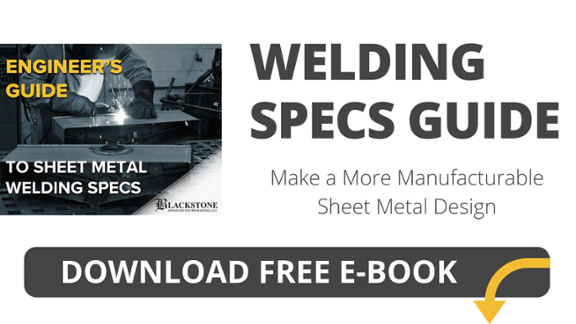 When creating a specific shape or design, key components must be fabricated. There's a certain level of customization that cannot be machined and, as you make these designs come to life, you must be able to effectively shape and form metal into a usable part.
When creating a specific shape or design, key components must be fabricated. There's a certain level of customization that cannot be machined and, as you make these designs come to life, you must be able to effectively shape and form metal into a usable part.
This leads to a critical question: Which metals can be welded together? More specifically, can you weld lightweight aluminum to heavy-duty steel?
Welding Different Metals Together
Regardless of whether you're in commercial, industrial, or structural metal fabrication, there are varying techniques that you may use. However, all three industries require the use of reliable materials, being mindful of the finished product.
Whether you are working with copper or steel, the key is understanding how each metal responds when exposed to heat and, in turn, how that metal can be manipulated.
For instance, what's the strength of the metal in question? Remember to consider, based on its intended use, its:
- Melting point
- Ductility
- Electrical conductivity
All of these components must be examined and then, based on these properties, appropriate techniques and methods can be selected.
Welding Steel to Aluminum
Steel is commonly used because it's incredibly versatile and can be used during any welding process. For those aiming to reduce rust, stainless steel is also an option. Are you planning to weld steel and aluminum together? This may be done, but these two materials cannot be fusion welded.
On that note, it's important that you are aware of the techniques required. This will help you avoid the formation of brittle compounds and create a finished product that truly meets your expectations. Although welding aluminum to steel is more challenging than welding steel to steel, it is certainly possible.
For starters, aluminum and steel have different melting points and metallurgy. For example, aluminum is known to have a low melting point and high thermal conductivity, in addition to having an aluminum oxide surface coating -- which can result in a lack of fusion and ductility if not removed prior to welding.
To help prevent some of the possible issues discussed above, it is recommended that you consider dip coating, especially if you plan to arc weld aluminum and steel. You should also understand that there are various grades of aluminum for welding, and some are more forgiving than others.
At the end of the day, welding aluminum may seem intimidating, but it's not -- it's simply different. If you are comfortable with steel welding, you will need to learn new techniques and expand your knowledge in order to work with aluminum.
Or Just Leave It to Your Fabricator
Ready to begin a custom project but don't know where to begin? Speak with a fabricator today! An experienced fabricator can jump into the design process and optimize your material and welding specifications for the best odds of success.



